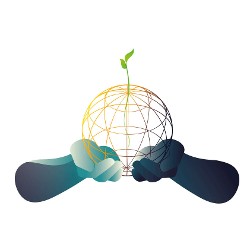24 June 2020
The gender dimension of sustainable development
Despite the recent ravages of plague, war, and pestilence, we humans still excel in one unceasing task — breeding. So much so, humanity is on course to squeeze nearly double the present number of people onto planet Sardine-Can by 2100. The COVID-19 crisis alone illustrates the alarming and increasingly interconnected nature of the challenges facing
systems of government around the world. Putting systems thinking at the center of policymaking for a sustainable way forward will be essential in tackling such obstacles. Research at IIASA is exploring possible answers. The link between education and demographic change, for example — particularly women’s education — is a promising and tantalizing solution to the question of sustainability. Nor is the institute alone in this thinking.
The UN identified that making women more socioeconomically involved in our world and more
self-sufficient could help enormously with our economic, social, and environmental sustainability.
“Women and girls play a crucial role in the fight against climate change, and it is essential to make sure that this role is not only fully understood, but incorporated into the Sustainable Development Goals,” says one UN report from 2018.
Several IIASA studies also link the empowerment and self-efficacy of women to increasing access to affordable, clean energy, as well as quality education, and future economic growth.
So many are agreed: it’s time to recalibrate the gender imbalance for all our sakes. IIASA research is supporting policymakers by providing the evidence needed to make the argument that gender issues have impact.
The power of education
Achieving sustainable outcomes as per the UN Sustainable Development Goals (SDGs) is probably a good start. When devising strategies for sustainable development in both developing and developed countries, IIASA has successfully pinpointed how increasing the
self-efficacy of women, for instance, through education and workforce participation, will affect
future population dynamics.
One such analysis links education and demographic change. The authors highlight how lifelong education strategies that take gender issues into account, starting from early childhood, can promote productive working lives and healthy aging.
“In general, what matters for the economic wellbeing of societies is the proportion of the total population that earns an income as part of the workforce. Not all people in the usual working ages 20–65 are, however, part of the workforce. At the same time the proportion of people above age 65 is increasing due to population aging,” explains IIASA researcher Wolfgang Lutz who has been studying the intersection of demographics, migration, population, and education.
“Since the workforce participation of women is still rather low in southern Europe compared to northern Europe, there is still room for compensating the increasing number of pensioners through higher proportions of women participating in the workforce. The higher the education of the workers, the higher their productivity, and the higher their contribution to economic wellbeing.” Wolfgang Lutz
More women in the workplace
Likewise, another team of IIASA researchers has been researching how migration, workforce participation, and education can balance the cost of aging in Europe.
The EU had been shaped by population growth, but now, thanks to longer life expectancy and low fertility, its population is aging. This new demographic frontier suggests that the burden on our social system will be too great to bear.
So how do we avoid overburdening our social system with population aging? The study agrees that getting more women into the workforce would be a good start.
“It's important to reduce barriers that prevent women from having higher labor force participation. By doing so, previously economically inactive people can enter the workforce, thereby reducing the dependency ratio and mitigating consequences of population aging,” says study lead author Guillaume Marois, a researcher at IIASA and the Asian Demographic Research Institute of Shanghai University.
The study highlights the “huge reservoir of talent” women represent and their potential rising-tidelifts-all-boats dynamism. Marois adds that stabilizing demography is a prerequisite for sustainability, while women’s empowerment is a key driver in stabilizing demography.
This new IIASA research shows that higher levels of education and expected increases in labor force participation (particularly among women) in both migrant and local populations will mitigate the financial challenges posed by aging populations in EU countries.

© Adam Islaam
“Although demographic aging is unavoidable in Europe, our research shows that the fears associated with the coming economic burden have been unduly exaggerated. Conventional projections use the simplistic and inappropriate conventional age-dependency ratio, which assumes that everyone aged over 65 is not working and that everyone aged between 15 and 64 is equally productive,” Marois explains. “With better labor force participation among migrants and the general population, Europe could largely avoid the widely expected negative impacts of aging.”
Conversely, the study also found that high immigration volumes combined with both low education and integration leads to increasing economic dependency.
The best policy options would be to match Swedish levels of workforce participation — the highest in the EU — and lift labor-force participation in the general population, particularly among women, while practicing education-selective migration accompanied by high integration.
It is clear that getting more women into the workforce could make European development more sustainable in terms of population dynamics, but outside of Europe, where there are arguably even more gender disparities, gender issues are having an even greater impact.
Equality in the spotlight
“We live in a world ridden with inequalities, some of which overlap,” notes IIASA researcher Shonali Pachauri.
One study exploring links between gender, energy, and poverty, she contributed to, found that increasing access to affordable, clean energy is also gender linked and addressing gender imbalances is a possible solution to persistent issues.
“The study, based on a five-year research program, brought out last year, highlighted certain key findings and recommendations. The most important of these is that...
...gender aware policies, programs, and actions are required to meet multiple SDGs,” she explains.
The report emphasizes that while SDG5 separately recognizes the importance of gender equality from energy access addressed by SDG7, in reality energy access and gender equality are inextricably linked, and addressing them together can offer multiple development gains. The authors also point out the challenges and the triumphs of such polices, particularly in the Global South, where many gender-rebalancing projects are underway.
One project in Ethiopia perhaps typifies some of the work highlighted in the report. In the “Light for Eve” trials, thousands of girls are being given small solar-powered lanterns. These lamps are helping to stop child marriages and are changing the way girls are seen in rural areas. Instead of being sold off as child brides to bring income, girls are chosen to receive a rechargeable solar light. The lamp is used for light so girls can study at home at night, and they sell excess power to those who want to recharge their phones for extra income. This
helps them become breadwinners, keeps them in school, and breaks the cycle of child-bride-births and poverty.
The study also revealed that energy policies that do not explicitly target women often result in
inequitable access to energy services between men and women, and that the involvement of women as entrepreneurs and employees in energy-system supply chains — particularly in non-traditional roles — is a win-win situation.
Unfortunately, it is not all success stories on the march to women’s empowerment. As satirist H.L. Mencken once said: “For every complex problem, there is an answer that is clear, simple, and wrong.”
Efforts to address the multiple dimensions of sustainable development are challenging, as is
illustrated by the well-publicized venture to replace the dirty-fuel burning cooking stoves of India with Liquefied Petroleum Gas (LPG). Recent research by the IIASA Energy Program looked at the adoption of LPG gas for cooking by rural communities in India.
The researchers found that despite the success of the LPG program, which reached a large number of low-income Indian households, many did not use LPG on a continuous basis, but continued to rely on biomass fuels as the predominant fuel for cooking, using LPG sparingly or only for specific purposes such as making tea and snacks.
In addition, the capital cost subsidies through India’s Ujjwala (Bright and Lustrous) cooking
gas program, which is a policy specifically directed at women, helped promote rapid adoption of LPG gas, but not regular use. The authors concluded that unless women are empowered to make decisions about the fuels and stoves they use, just providing the stoves for free or through loans to women, does not ensure they will continue to use them.
Women may be key agents in supporting low-emissions development, but perhaps the above
studies more importantly show that if women are properly equipped with skills and knowledge they can make an equal contribution in the sustainable development of the world.
By Michael Fitzpatrick
CONTACT DETAILS
Distinguished Emeritus Research Scholar Population and Just Societies Program
Research Scholar Multidimensional Demographic Modeling Research Group - Population and Just Societies Program
Research Group Leader and Principal Research Scholar Transformative Institutional and Social Solutions Research Group - Energy, Climate, and Environment Program
Principal Research Scholar Sustainable Service Systems Research Group - Energy, Climate, and Environment Program
Principal Research Scholar Integrated Assessment and Climate Change Research Group - Energy, Climate, and Environment Program
PUBLICATIONS


